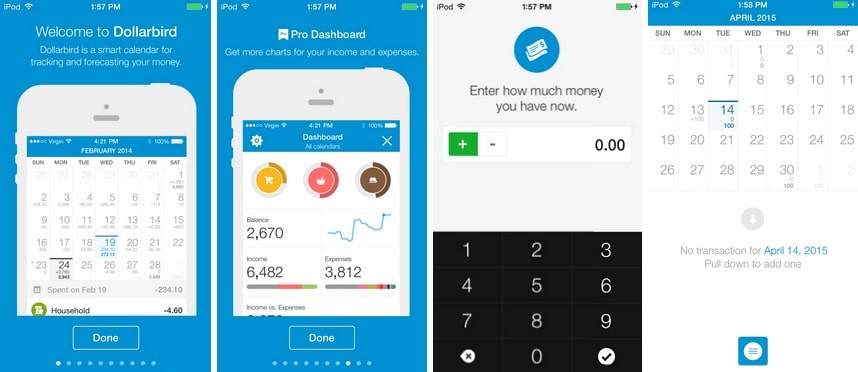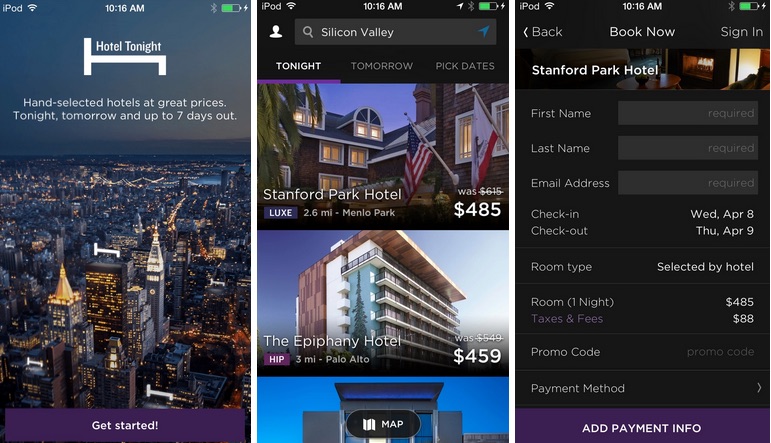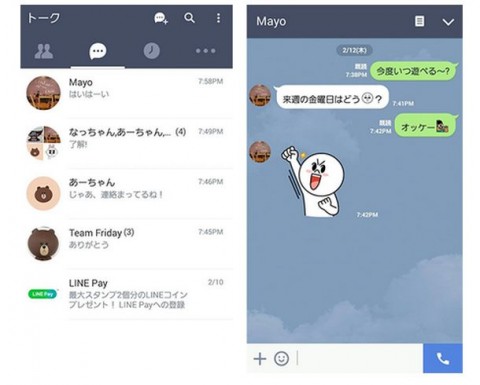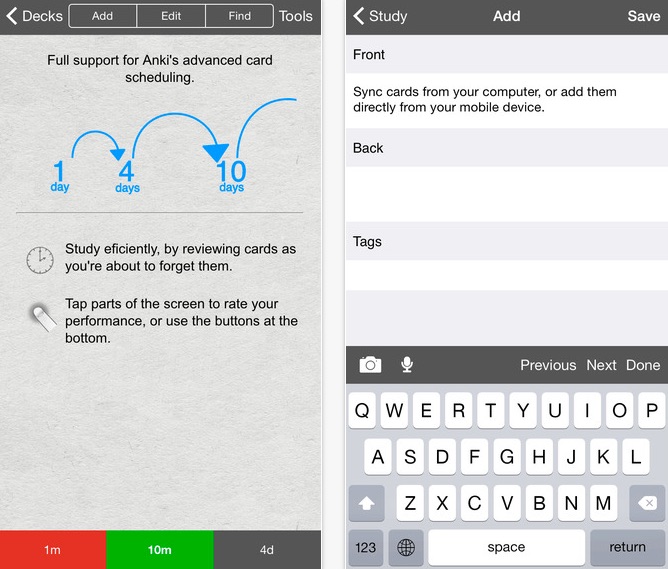Why I’ll Never Delete these 5 Travel Apps From My Phone
There are some apps I’ll never delete from my phone. Having recently returned after 2 years of living abroad in Japan and Taiwan, these 5 apps made such an enormous impact on my daily life and travels that I can’t imagine ever being without them. I’m going to dig into why each of these apps are products I simply can’t live without, why I’d pick them over their competitors, and ideas from their models you can use to test and optimize your own applications.
Dollarbird – Fast, Non-Intrusive Money Tracking
One problem that a lot of travelers have is that spending money in a foreign currency often doesn’t feel like spending money. Much like the way casinos use chips, unfamiliar bills and coins one step removed from our own native currency has us easily forgetting how much money is being spent.

“Chips are innovative form of money that hold good only for the casinos. Once the players change their money into chips, most of them tend to spend completely rather than going back and getting the remaining cashed.” — Akhilesh Saklecha
Pair this with an “I’m on vacation” mindset and it’s easy for travelers to spend way more than they intended. Most money tracking tools are too slow or annoying to use, but I was pleasantly surprised by how few clicks it took to enter something in Dollarbird. After selecting a category and entering the amount, I was done. That’s exactly why you’d be hard pressed to make me change apps. With Dollarbird, I can
input a transaction between the time I hand over the payment and to moment I receive the receipt.
Key Takeaways:
The company systematically cut out all unnecessary aspects of a money tracking app to make it as simple and easy to use as possible. Cutting out functions such as logins, web syncing, and complex graphics makes it lightning fast, and a preferred choice for quick entries.
Test cutting out non-essential functions that don’t directly drive your revenue.
HotelTonight – Completing Transactions with Minimal Friction
I’m a spontaneous traveler, so I’ll often deviate from previous travel plans if I find something unexpected and fun. During those times, I need to find a place to sleep quickly, and HotelTonight perfectly fits that niche.

Unlike other booking sites and apps, it makes it painless to book a last minute hotel. I used to spend a lot of time combing through travel sites’ listings, opening multiple tabs to compare options and read reviews. HotelTonight makes it easy to look through a handful of listings quickly, then book what I want. Without that extra choice, I have less decision fatigue which allows me to make better choices about what to do next.
Key Takeaways:
Traveling is hectic enough, so I’d choose HotelTonight over any other service (even if they’re cheaper) because I can find a book a hotel within 30 seconds and keep my stress levels low. They’ve cut their funnel to near absolute minimum so transactions are simple and fast. It fills a much needed void that gives me peace of mind knowing I wont find myself sleeping overnight at a Denny’s or Joyful Restaurant….again.

Try to streamline your service and test whether taking some choice out of the equation can be a good thing. Track the changes and see how they affect key conversions.
Google Translate – Not for the Reason You Think
This one seems pretty obvious on the surface, but I actually found the translation abilities to be pretty poor on Google’s app. There are tons of translation apps/dictionaries out there, most of them much more accurate than Google’s. However, one key feature made it impossible to ever delete from my phone: character recognition.

Most dictionaries that support Chinese/Japanese characters use stroke order as part of the input process. Unfortunately for me, stroke order can be pretty difficult to remember exactly, and I’d often find myself trying to input a character 5+ times before getting it right. Google Translate on the other hand, takes input based on the overall shape. Using the same strokes in Translate produced dramatically different results, with a very low fail rate. Even though the translations themselves were often inaccurate, I’d find myself inputting the characters, then copy and pasting the text into a dictionary for a better translation.
Key Takeaways:
Even though Google’s actual translation service can’t compete well with proper dictionaries, it focuses on its strong point in character recognition. Speed is always key, and doing the input in one program then transferring it to another proved to be a better solution than using just one app. Now, they’ve even further improved that capability by allowing users to take pictures and translate text directly, even further improving their competitive edge. While any language dictionary will suit me fine, I don’t think I’d ever want to travel without Google Translate in my pocket.
LINE – The All In One Platform for Social Interactions
What I discovered in both Japan and Taiwan was that a surprising amount of people don’t have personal computers, and that most of them interact with each other through their phones. Their medium of choice? LINE. The app acts as a social media network, messaging, calling, video chatting, payment and game system all wrapped into one convenient and cute package. While at first I only adopted the platform since it was the easiest way to connect with others, but I soon found myself falling in love with it, and asking, “Why hasn’t this taken hold in the US markets?”

LINE allows you to exchange contact information by scanning QR codes, unlike the complexity of searching someone on Facebook (and not having them show up due to privacy settings) or exchange phone/email. This key differentiator made it much easier to add new friends into your network, and connect with them using not just text, but a whole host of other features.
LINE has implemented a plethora of ways to connect and keep up with friends using features such as texting, voice and video calls, making payments, sending stickers instead of text (surprisingly awesome), posting content on the LINE feed, and others.
These features together allow people to use a single platform to contact friends in multiple ways, arrange meetings at specific locations, or even just keep up with what your friends have been doing.
My favorite function by far was the ability to drop a pin on a map for friends to meet up at. Whenever I wanted to meet up with friends in the city, we could just drop a pin for the group and all meet up at the predetermined spot.
Key Takeaways:
LINE is great because they tested out all kinds of different features to help users connect, as well as making adding friends to your network a breeze. Now, Facebook is playing catch-up to try and imitate its international competitor, copying many of its features and functionality.
Anki – The Fastest Way to Learn a Language
Anki is the best way to learn a language I’ve ever encountered. It’s use of Spaced Repetition (SRS) in a convenient mobile platform has helped me build a strong language learning habit that’s lasted for well over a year. More importantly Anki allows you to create your own personal deck of flashcards, and even integrate audio and visual aspects as well. Most SRS systems I’ve found only allow you to use preset decks, which defeats the whole point.

While competitors focused on creating pre-set flashcards for users, Anki found high levels of popularity by letting people create their own decks and import others. They found that the customization was far more important in the language acquisition process.
Language learning is personal, so you want flashcards that are applicable to your life, not what some textbook tells you. I personally didn’t need to learn how to tell someone “I’d like to borrow a book from the library” yet, seeing as I could barely read Japanese at the time. Instead, I got to create my vocabulary based on my daily interactions.
Key Takeaways:
Anki went against the general trend, and based their app off of what they found through testing and feedback. Doing so helped them build one of the most popular tools of all time. I found that their easy to use system made it easy to study for a short period of time while on the go.
Conclusion
Each of these apps has earned a permanent position in my phone for good reason: they make my life easier. Unlike a lot of other apps I download, I know I’ll be using these apps for a long time to come because they have optimized their applications to help me fill a need in my life. Hopefully you’ll have gained some new insights from these different apps and how you can make your users feel as strongly about your app as I do about these.
Thanks for
reading!
More articles you might be interested in:
Make Your App Sticky: Retention Lessons From 3 Top Travel Apps
According to research done by Google, 88% of travelers with smartphones would switch to another app if the one they’re using doesn’t satisfy their needs. Travel booking isn’t something people do every day, or even every month, which makes travel app...
Read More3 Mobile UX Design Principles for Travel Apps
If the internet has put the world at our fingertips, mobile apps—especially mobile travel apps—have put it beneath our thumbs. Only problem is that the entire world can sometimes prove too much for the limited reach and mobility of thumbs,...
Read MoreWhy Many Apps Are Leaving Money on the Table
Everyone who’s not A/B testing is leaving their app unoptimized and losing out on more engaged customers and more revenue. Most app managers I talk to seem to realize this, but we at Apptimize still often hear from some customers...
Read More